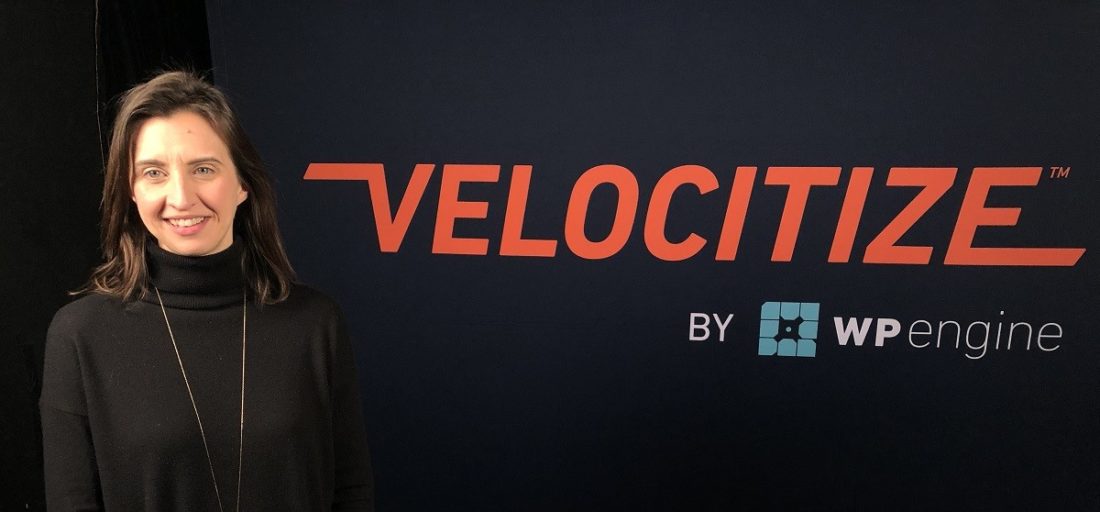Radio has been around for a very long time and has always been a powerful platform for marketers and engaging for consumers. With the advent of broadband, mobile and just accessibility, audio has really expanded.
Johanna Weber served as VP, Sponsorship Marketing at National Public Media, NPR’s corporate sponsorship subsidiary. In this role, which she recently left, she helped establish NPR as a must-buy media property. She has been recognized as one of AdAge’s 40 under 40.
In this episode of Velocitize Talks, Johanna Weber, an expert in strategic and brand marketing, talks about the power of audio, authentic brand marketing, and opportunities for marketers in voice activation.
Changing channels (1:28)
Brands are learning how to share their message in the tone of the podcast that they are advertising in. So you see a range of different sponsorship messages and styles.
Throughout much of her marketing career, Weber has focused on helping brands understand how audio could be leveraged within their broader media mix. Audio is not the same as visual mediums or messaging, and brands can best use audio to share their story. Audio is a powerful platform to share the story behind a brand’s products and the values that they represent in a way that is integrated rather than interruptive.
We’re all ears (2:54)
You’re able to develop a personalized listening experience more and more with platforms like Spotify and Pandora [providing] listening experiences informed by and curated for you based on your habits, your patterns, the type of music you listen to, and the type of spoken word content you listen to.
Today consumers are able to access audio pretty much everywhere and anywhere. According to a study conducted by Edison Research and Triton Digital, The Infinite Dial, more than one-third of Americans age 12 and over (104 million to be exact) are consuming podcasts on a regular basis, up significantly from 2019. They listen at home, in their car, and on the go. This provides brands the opportunity to target their message based on topics covered in podcast episodes and create maximum alignment between the brand and the content.
Listen up (4:08)
You can go broad and you can go deep in podcasts.
Brands are finding that consumers are coming to their websites as a result of listening to their ads on podcasts. They’re seeing listeners sign up for social channels and recommending products based off of these sponsored messages in podcasts. And the research backs it up. Nielsen and Midroll conducted a study in 2018 that found podcasts delivered a four-time brand recall compared to other platforms.
How they built this (6:53)
We really thought about how you create an experience that is not muddied by sponsorship, that doesn’t take people out of the viewing of this podcast being created, but feels supportive of it.
“How I Built This with Guy Roz” was one of the very first podcasts that NPR turned into an event series. Weber and the NPM team focused on creating sponsorship opportunities that mirrored the respectful, non-promotional sponsorship messaging style found in NPR podcasts.
For example, at the 2019 How I Built This Summit, presenting sponsor American Express enabled attendees to share custom video messages. GoTo set up remote meeting and charging spaces, while MOO and Avalara showcased their products and services through interactive footprints. Brand representatives also delivered remarks during Main Stage and breakout sessions. After the event, 61% of attendees felt the sponsors added value to the event; there was a 75% sponsor recall among attendees.
Find your voice (9:18)
The number one question that marketers need to ask themselves is, What utility am I offering users? Voice-activated devices from the voice assistant on your phone to the smart speaker on your counter in your kitchen, you’re using them in different ways at different times. So how are you delivering an experience that is additive to what they’re doing on this device?
Juniper research recently reported that by 2023 you can expect 8 billion voice-activated devices. Voice-activated marketing is no longer in its infancy with 43% of companies already investing in technology to enable voice marketing. Add that to the over 1 billion voice searches conducted every month and you can see why brands need to start integrating voice-response technology into their marketing plans.
Brands need to be creative in order to prompt people to learn how to ask for your content. Brands will also need to get consumers to internalize voice utterances so they become part of the patterns and habits that consumers form with voice-activated devices.
To keep up with Johanna Weber, follow her on LinkedIn.
